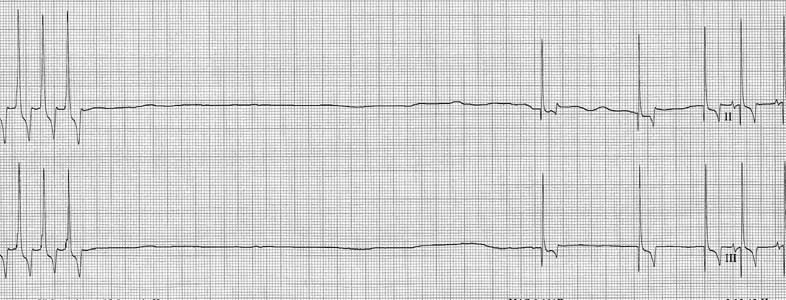Pauses – Sinus Arrest / Sinus Block
Sinus Arrest or Sinus block is commonly referred to as a Pause. This occurs when there is a conduction block causing in the sinus node and/or the atrium causing a delay or ‘pause’ in the ventricular contraction. Pauses can also be caused by a blocked PAC. If pauses are prolonged, nodal or ventricular escape beats may be seen. In Sinoatrial (SA) Block, the length of the pause is a multiple of a regular cycle. Sinus arrest does not measure out to a multiple of a regular cycle length. Blocked PACs also result in dropped beats, but the P wave is premature with no QRS.
Characteristics can include:
- Prolonged R-R interval approximately the length of one cycle
- Absence of a P wave
- P wave which is on time
- Premature P wave that is blocked
Following the pause, an escape beat may occur from the sinus node, atria, AV Node, or the ventricles. Typically, the dropped beat does not produce a prolonged R-R interval long enough to be called a Pause (2 seconds). However, this arrhythmia can be seen in context by observing rate, rhythm, and pattern change of ECG.
Pauses are considered significant as a serious Supraventricular arrhythmia due to severe consequences. If the pause duration is long enough, it can cause the patient to faint or even collapse. Not only does this represent danger, but consistent pauses can indicate risk for mechanical failure of the heart. Patients with persistent and severe pauses may require an implantable pacemaker.
Example of Pause:
For Pause Evaluation:
- Select a strip long enough to show the recovery from the pause.
- Use calipers to measure and show the length of the pause.
- Show examples of different escape mechanisms (ventricular and nodal escape beats).





